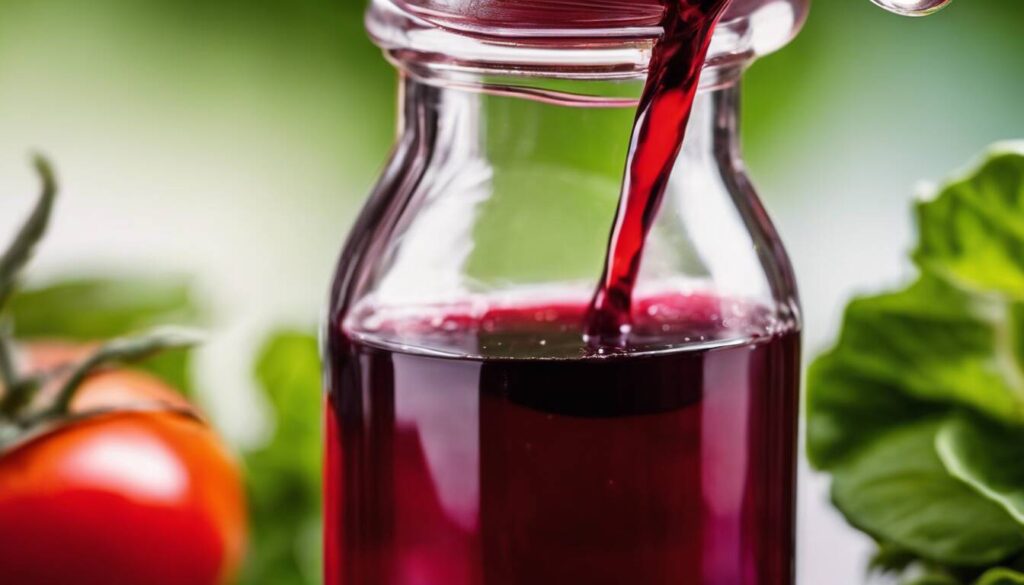Sake and red wine, with their unique origins and processing, offer distinct benefits. Red wine is rich in antioxidants like resveratrol, promoting heart health, but presents more calories than sake. However, not all calories are created equal. Sake, a fermented rice wine from Japan, contains no sulfites, making it a fitting choice if you are sensitive to this common preservative. Now let’s talk about alcohol drinking norms…
Sake and red wine both contain antioxidants such as polyphenols, which may offer health benefits. Moderate consumption of either beverage has been associated with potential heart health benefits, but it’s essential to enjoy them responsibly and in moderation. Keep in mind that individual responses to alcohol can vary, and always consult with a healthcare professional for personalized advice.

Alcohol Consumption: A Brief Overview
Alcohol is a complex topic and widely consumed across cultures for various reasons, including social, religious, and personal enjoyment. It’s no secret that moderate alcohol consumption can have both positive and negative impacts on health. The key to reaping the benefits without facing harmful consequences lies in understanding and practicing moderation.
Moderation is the critical concept when it comes to alcohol consumption. Moderate drinking typically refers to up to one drink per day for women and up to two drinks per day for men—a guideline based on general recommendations provided by health authorities such as the National Institute on Alcohol Abuse and Alcoholism. Adhering to these limits may potentially yield certain health advantages associated with moderate alcohol consumption.
Conversely, excessive alcohol consumption can have severe detrimental effects on our bodies. From liver disease to heart problems and specific types of cancers, the repercussions of heavy drinking are widespread and potentially life-threatening. It’s essential to keep in mind that the negatives often outweigh the positives when it comes to excessive alcohol intake.
One thing to remember is that these guidelines should be viewed for general reference. As with anything related to health, individual factors play a significant role in how alcohol affects each person—factors such as age, weight, genetics, and overall physical health all influence how a person is affected by moderate or excessive alcohol consumption.
It’s easy to see why it’s crucial for individuals to understand these limits before indulging in alcoholic beverages. A clear understanding of the potential benefits and risks allows one to make informed choices when it comes to alcohol consumption.
Understanding the fine line between moderation and excess is critical when considering the health implications of consuming alcoholic beverages. In our comparison between sake and red wine, we’ll explore how these considerations come into play concerning health benefits.
Nutritional Differences: Sake vs Red Wine
When comparing sake and red wine nutritionally, there are some key differences to consider.
Let’s start with the basics. Sake is made from fermented rice and contains fewer calories and carbohydrates per serving compared to most wines. A standard serving of sake contains around 150-200 calories and 9-12 grams of carbohydrates. Moreover, sake is gluten-free, making it a suitable choice for those with gluten sensitivities or celiac disease. Additionally, it’s high in amino acids, particularly glutamine, linked to various health benefits such as immune system support and gut health.
On the other hand, red wine is made from fermented dark-colored whole grapes and contains more calories than sake. Additionally, it provides a higher amount of antioxidants such as resveratrol, which has been linked to heart health. These antioxidants play an essential role in protecting the body from harmful molecules called free radicals.
To put this into perspective, if you’re looking for a lower-calorie option, sake may be the better choice. But if you’re interested in the potential heart health benefits of antioxidants like resveratrol, then red wine may have the edge.
It’s important to remember that both sake and red wine can be part of a balanced lifestyle when consumed in moderation. While moderate consumption of red wine has been associated with potential health benefits, such as cardiovascular improvements, excessive alcohol consumption can lead to negative health effects.
Understanding these nutritional differences can help individuals make informed decisions about which alcoholic beverages best align with their dietary needs and preferences.
Now that we’ve explored the nutritional distinctions between sake and red wine, let’s delve deeper into the specific health benefits of sake and how they stack up against other alcoholic beverages.
Breaking Down the Health Benefits of Sake

Sake goes beyond its nutritional composition to offer surprising health benefits. One notable advantage is its lower likelihood to cause hangovers compared to other alcoholic beverages. The absence of congeners, byproducts of fermentation that contribute to hangovers, makes sake a more forgiving choice. Its low levels of impurities contribute to its reputation as a nearly “hangover-free” drink, unlike red wine or other spirits.
Moreover, a lesser-known aspect of sake is its potential impact on cancer prevention. While not a cure or substitute for medical treatment, some studies have suggested that moderate daily consumption of sake may play a role in preventing certain types of cancer. The presence of amino acids in sake is thought to contribute to this potential, as they have shown promise in inhibiting the growth and progression of cancer cells. Despite these promising findings, it’s essential to emphasize that moderate consumption is key, and sake should not be considered a primary means of cancer prevention.
In addition to its association with lower hangover potential and potential cancer-fighting properties, sake offers another unique advantage over red wine. Its lower acidity makes it gentler on the throat and stomach, particularly beneficial for those sensitive to highly acidic beverages or prone to acid reflux.
Think of it this way: Imagine drinking something that feels smoother going down and wakes up your taste buds gently, without leaving a harsh aftertaste. That’s what lower acidity in sake feels like compared to the potentially sharp tang of red wine.
So next time you raise your glass of sake, take a moment to appreciate the potential health benefits you’re toasting to alongside its delicate flavor profile. Remember, moderation is key when it comes to alcohol consumption—not just for the taste but also for your well-being.
As we’ve explored the unexpected health benefits of sake, let’s now shift our focus to Exploring the Health Benefits of Red Wine and compare its unique advantages in the realm of health and wellness.
Exploring the Health Benefits of Red Wine
Red wine, with its deep and rich color, has garnered significant attention for its potential health advantages. The antioxidants found in red wine, especially those made from dark grapes, have piqued the interest of scientists and health enthusiasts alike. One of the key antioxidants, resveratrol, is renowned for its heart-protective properties, which encompass reducing “bad” cholesterol levels and preventing blood clots.
Resveratrol’s heart-protective benefits might seem like a lofty claim, but supporting research indicates that it indeed plays a crucial role in maintaining cardiovascular health. By safeguarding the lining of blood vessels in the heart, resveratrol helps bolster arterial function, contributing to overall heart health. Additionally, the ability to flush out bad cholesterol while boosting levels of HDL (good) cholesterol further underscores the impact of moderate red wine consumption on heart wellness.
For those looking to incorporate red wine into their lifestyles, it’s important to remember that moderation is key. Pairing a glass of red wine with a healthy meal can not only enrich your dining experience but may also contribute to healthier eating habits.
Research continues to unfold on the potential health benefits of red wine, allowing individuals to make informed decisions about incorporating moderate consumption into their lifestyle.
Now let’s turn our attention to comparing the health benefits of sake and red wine to gain a comprehensive understanding of these enticing libations.
Comparative Review: Sake and Red Wine
When it comes to health benefits, both sake and red wine have their own distinct advantages. Let’s start by exploring the nutritional content of each beverage.
Sake, as a rice wine, is known for its lack of histamines and tannins in comparison to red wine, making it a favorable option for individuals sensitive to these compounds. Additionally, one serving of sake contains approximately 134 calories, 0.5 grams of protein, 0 grams of fat, and 5 grams of carbohydrates.
On the other hand, red wine is celebrated for its rich antioxidant content, particularly resveratrol, which has been linked to potential cardiovascular benefits. A standard serving of red wine (about 5 ounces) typically contains around 125 calories, 0.1 grams of protein, 0 grams of fat, and around 4 grams of carbohydrates.
Sulfites are preservatives commonly found in various types of alcohol, including wine. However, sake generally contains lower levels of sulfites compared to red wine. This distinction can be especially beneficial for individuals who are sensitive or allergic to sulfites.
Additionally, the presence of antioxidants and amino acids in red wine can contribute to potential health benefits such as improved heart health and reduced inflammation. In contrast, sake may contain lactic acid bacteria called lactobacillus, a probiotic that can potentially aid with digestive issues due to its positive effects on gut health.
When considering these factors, it becomes clear that the health benefits and drawbacks associated with sake and red wine vary based on an individual’s specific health needs and preferences.
In the end, what is most important is that individuals enjoy these beverages in moderation and make informed decisions based on their own unique circumstances. Whether you prefer the smooth taste of sake or the rich flavor of red wine, understanding the differences in nutritional content and potential health impacts allows for a more thoughtful approach to incorporating these beverages into your lifestyle.
Understanding the distinct nuances between sake and red wine sets the stage for comparing their overall health impacts. Next up, we’ll delve into identifying the healthier choice between these two beloved beverages.
Identifying the Healthier Choice: Sake or Red Wine
When it comes to health, both sake and red wine offer unique benefits tailored to different individuals. Let’s explore how these beverages can support your health and well-being.
Sake is a brewed alcoholic beverage made from rice, koji, water, and yeast. It contains no additives, preservatives, sulfites, nitrates, or dyes. Per 100 grams, sake has approximately 134 calories, along with 5 grams of carbohydrates and 0 grams of sugar. Interestingly, it’s higher in glucose compared to other alcoholic drinks but lower in fructose. Notably, sake holds significantly higher amino acid content than other beverages, particularly an abundance of glutamic acid which contributes to its umami flavors. Additionally, it contains peptides—smaller strings of amino acids—which are easier for the body to absorb. These peptides have health benefits such as reducing hypertension and symptoms of colitis.
On the other hand, red wine contains antioxidants such as resveratrol, flavonoids, and tannins derived from the skin of red grapes during the fermentation process. These antioxidants possess anti-inflammatory and heart-healthy properties. Red wine also contains polyphenols which may contribute to improved cholesterol levels and overall cardiovascular health. Moderate consumption of red wine has been associated with potential health benefits including reduced risk of heart disease, stroke, and certain types of cancer. However, excessive consumption can lead to adverse effects on health.
Both sake and red wine offer distinct health advantages. Sake is higher in amino acids and peptides which support various bodily functions such as digestion and cardiovascular health. Conversely, red wine provides antioxidants known for promoting heart health when consumed moderately.
Ultimately, the healthier choice between sake and red wine depends on individual health considerations, taste preferences, and cultural inclinations. It’s crucial to consult with a healthcare professional for personalized advice on alcohol consumption based on your specific health profiles. If you’re interested in exploring further about the impacts of sake and red wine on health, visit Wine Uncovered to access comprehensive information tailored to your needs.
In conclusion, whether you prefer sake or red wine, understanding the intricacies of each beverage is key to making informed choices for your health and well-being. Support us at our merch shop!

